How To Create A Dragon
So, you want to draw dragons, but aren't really sure where to start. That's okay, we all have to start somewhere.
I thought it'd be fun to share my thoughts on these mythical beasts, and my approach to drawing them. Please keep in mind this is how I draw them. You don't have to draw them this way if you don't want to. After all, they are a part of our imagination!
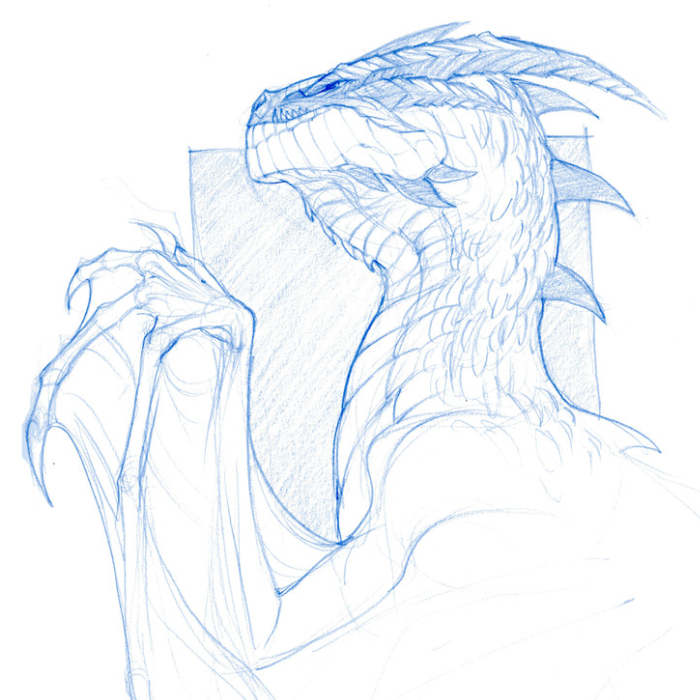
Step 1: Where to Start
Since dragons aren't exactly in reality land, there comes the question of what in the world could we possibly base them on? Well, there's a couple of options.
For me, they usually wind up as a combination of several animals that have existed, as well as plenty of animals that are alive and well today. There's plenty of references to go around, if you know how to use them.
Dragons with wings can be difficult, but bats have the perfect wing structure. Essentially, their hands are their means of flying, and if you look closely, the ligaments in the wings look like long slender fingers.
Cranes are another animal that we can look to for guidance. I mostly look to birds for how their heads/necks meet. Birds, in general, are actually very good reference for an entire dragon.
I look at dragons and definitely think reptile. Therefore, I look at LOTS of reptiles. ALL manner of reptiles. Lizards, snakes, turtles… anything I can get my hands on. They provide me with general looks, eye placement, and texture.
And of course … DINOSAURS.
Step 2: Construction
Now that we are armed with a variety of references, it is now time to actually put them into a believable creature design.
Since dragons can literally be … anything, this can be rather daunting. Without a limit, things can get a little crazy and you can even get lost in the drawing, floundering about and wondering where the legs go. Basic shapes should save you, along with your mile-long list of references, where we DO know where the legs go.
Below are some examples of how I begin to draw a dragon. All kinds, not just Eurocentric.
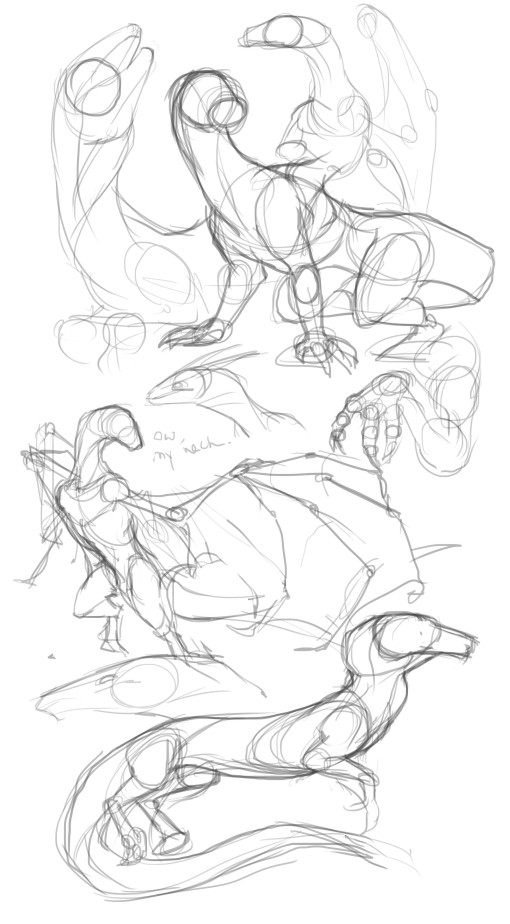
I combine A LOT of knowledge with my basic drawing shapes, like muscles, joints, among other things. For me, how you connect the head to the neck is VERY important.
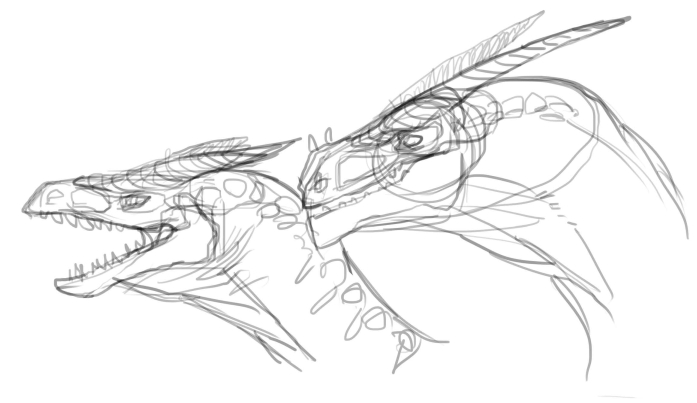
There's fat, skin folds, bone matter, things that we can't see that go underneath the skin. In order to keep that massive head up, there needs to be something substantial there.
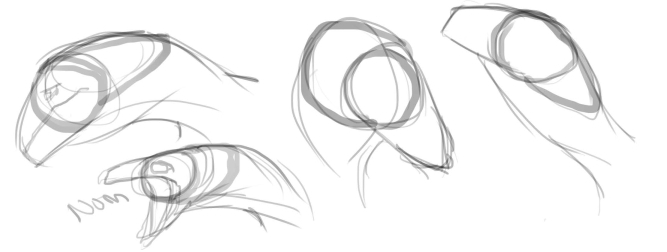
You can make the dragon look threatening, docile, even unsure. Just with the position of the neck and head.
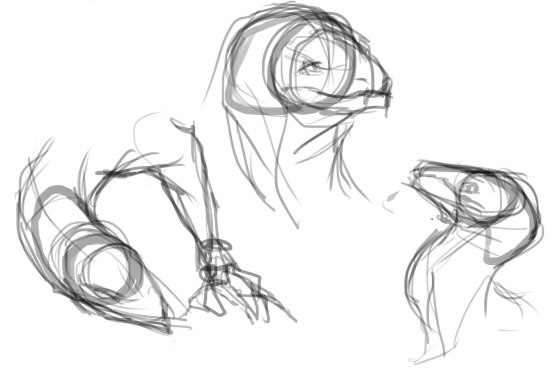
Putting a head to a body can be even more challenging. But always try to keep real animals in your mind when putting your dragon together. Even human anatomy can help you.
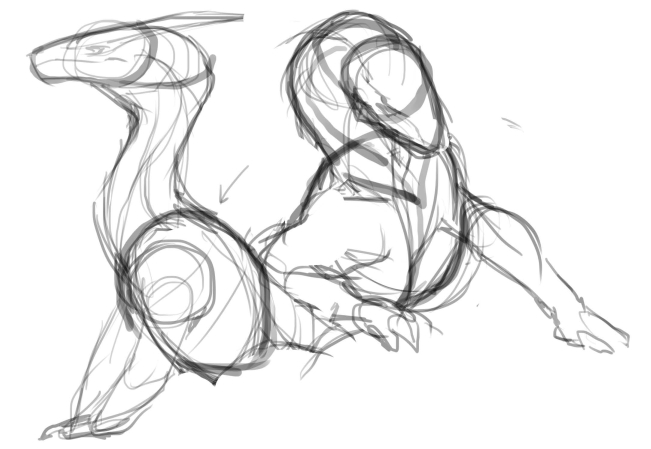
I typically place the neck atop a ribcage.
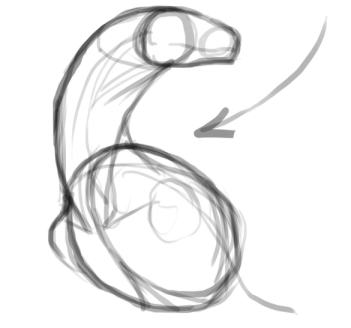
Step 3: Constructing the Limbs
The limbs can be just as unique as the dragon you're drawing them for, and just as annoying to make sure they actually fit the beast. Still using our references from life though, we can really pack some punch.
Claws, talons, wings. These are a few of my favorite things.
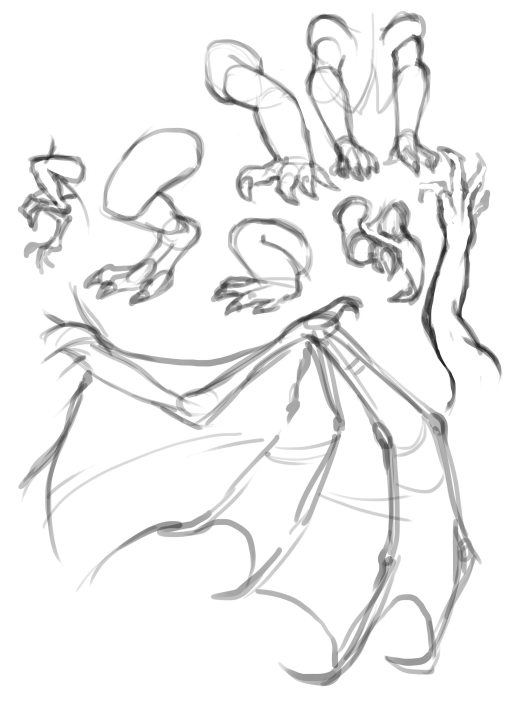
I'm one of those people who theme my dragons. What I mean by that is that I try to give the dragon I'm drawing a certain look. With this guy, he'll slightly keep the classic European dragon ideal, but with some slight twists.
Lately, I have been attempting to make a jungle lord-like dragon. Keeping that in mind, I give it limbs that I think will match that theme.
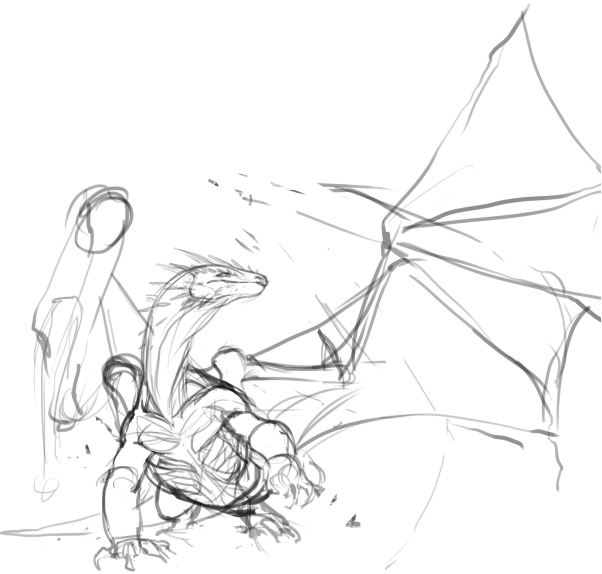
A rather unique problem with drawing dragons is that if you want to give your dragon arms, legs, AND wings, you're really going to be making up some interesting anatomy, because you're essentially adding a third set of limbs. This makes making up anatomy an interesting challenge.
Technically, you CAN just stick a wing onto a dragon with four limbs already and call it a day … buuut…
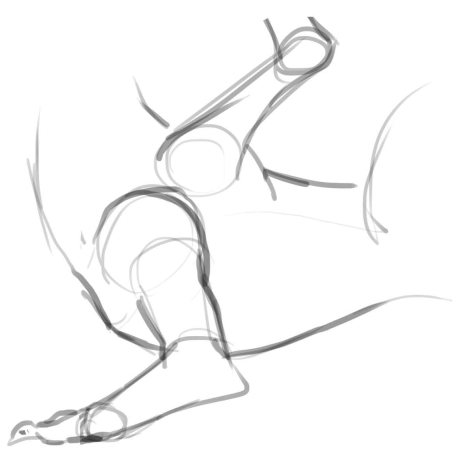
I like to think of it as if I was making a multi-limbed human-like monster. A dragon's got to have muscle and tendons to move that wing … definitely experiment with your own ideas, and you might be surprised what you come up with.
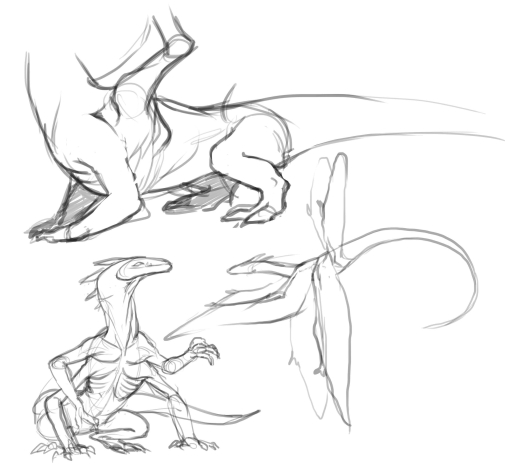
Step 4: The Crown
A lot of dragons have that one distinct trait: the Horns. Horns on real animals tend to be a part of the skull; a piece of bone that extends past the skin. Just like nails, claws, and spines.
You can certainly go wild coming up with the crown of your dragons. There are the traditional two-pronged horns, but why stop there?
Step 5: How to Put it All Together
So, you have all this information. How exactly do we really put a mythical creature like this together?
I'm not going to lie, it takes practice to do so. Not to mention you need to have an eye for design. Here, we're going to talk about how to get from point A to point B.
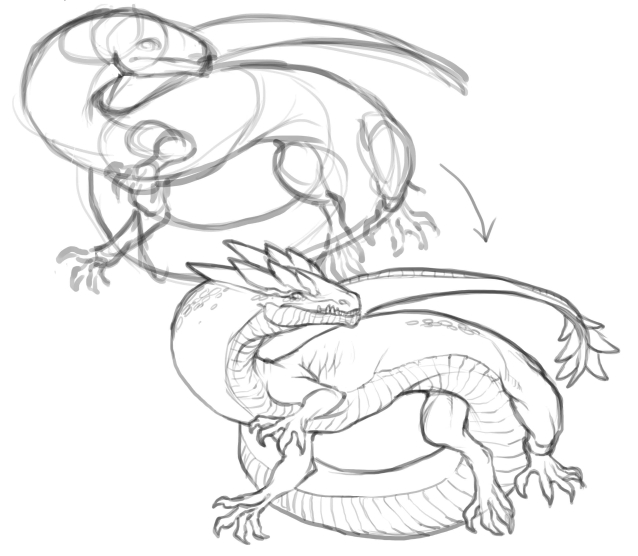
You'll likely won't get the results you want, unless you understand muscle and bone structures. Understanding how arms and legs move, as well as how bones can give you harsh edges, will eventually get you more sophisticated looking dragons. Imagination and vision are great, but it can only last for so long before things start getting a little too unbelievable.
Knowing when and how to use the tools at your disposal is what separates beginners from veterans.
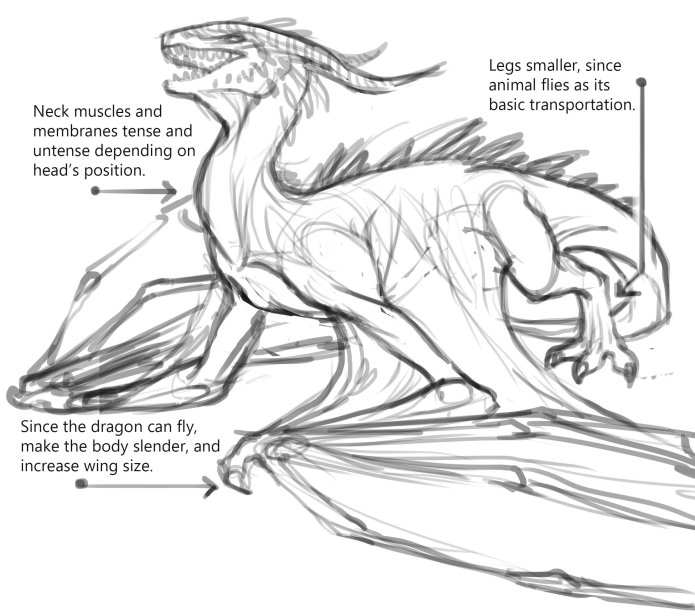
With more practice comes the ability to create dragons that push the boundaries of the traditional look.

Having a list of what your dragon can do typically helps me in designing what a dragon will look like. We can use my jungle dragon concept as an example.

Time to use what we know to put this dragon together.
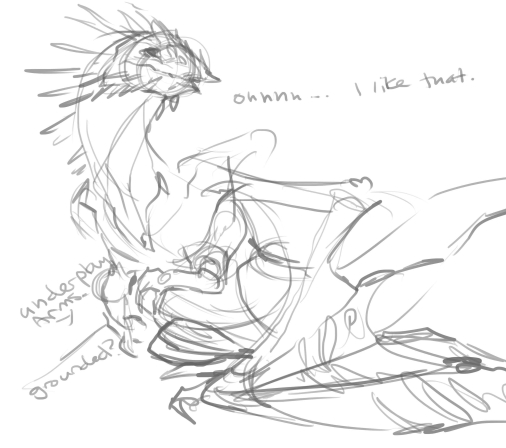
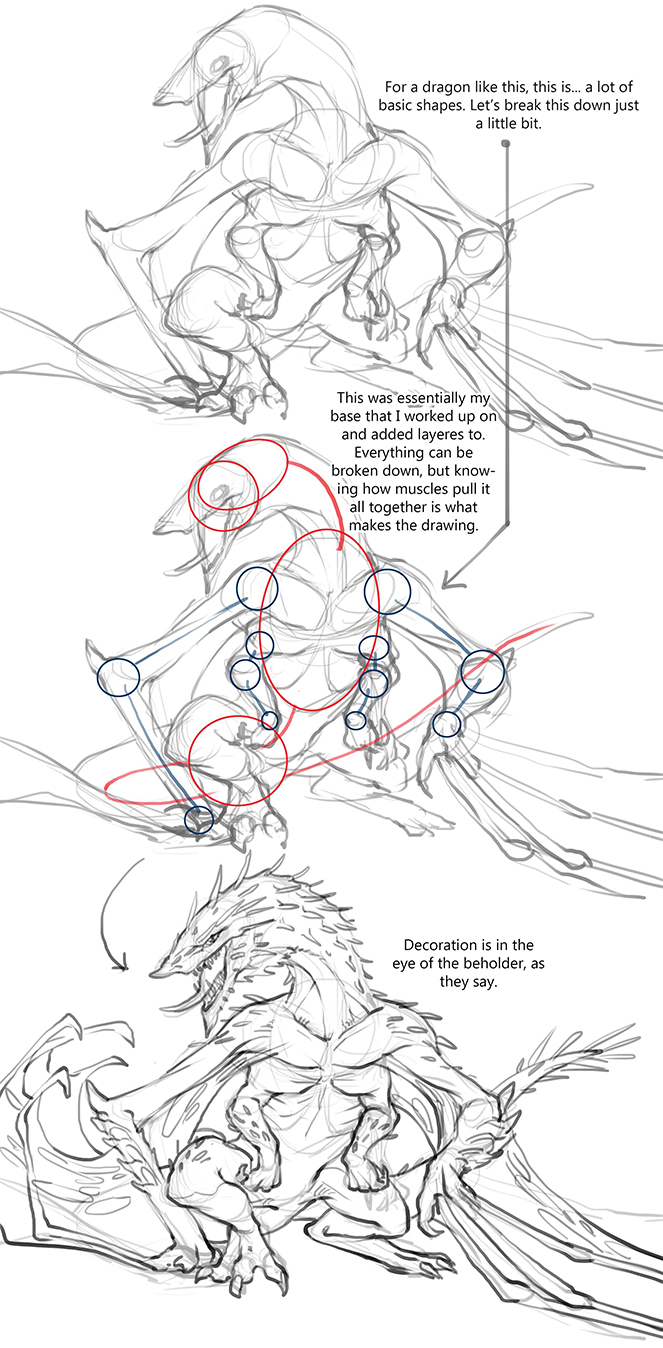
These are only just some examples of what you can do. Don't be afraid to explore, and don't be afraid to see what other artists do. There are some pretty crazy, but amazing, dragons out there!
I may or may not have had some fun attempting to emulate my favorites. You can learn a lot from your inspirations.
I hope you guys found this helpful. Good luck with your future drawings!
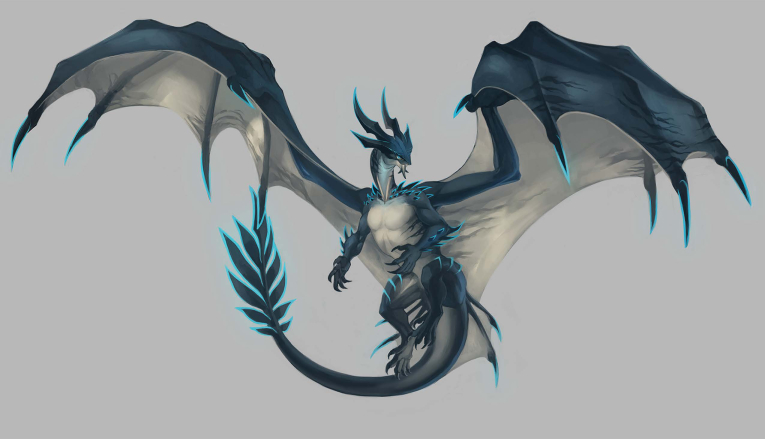
How To Create A Dragon
Source: https://www.clipstudio.net/how-to-draw/archives/156800
Posted by: mckaycaudds.blogspot.com

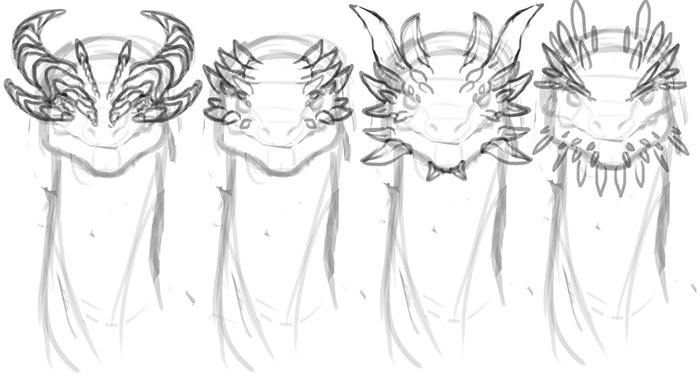
0 Response to "How To Create A Dragon"
Post a Comment